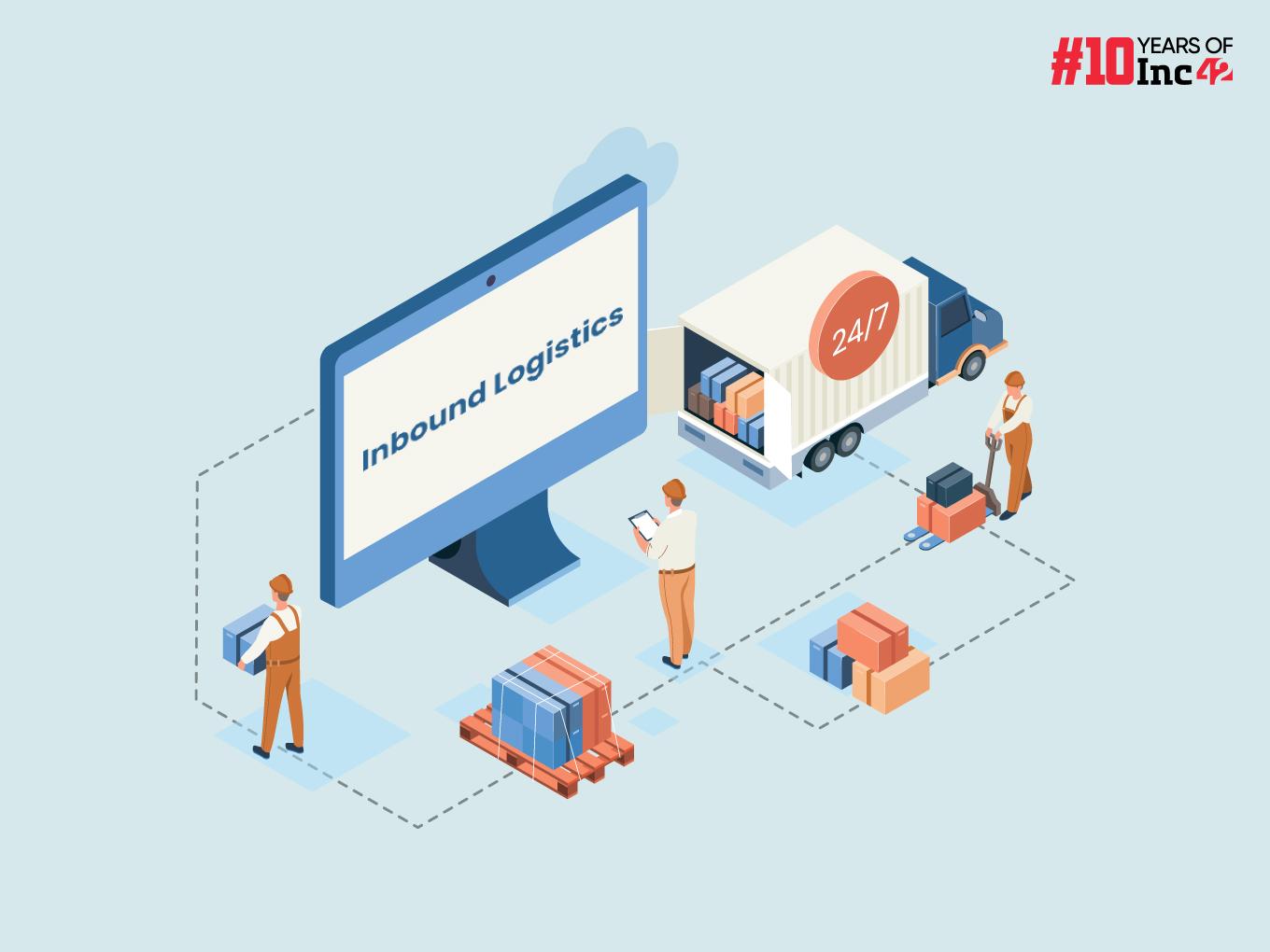What Is Inbound Logistics?
Inbound logistics is the company getting the materials and goods it needs, from ordering them from suppliers to storing them in its facilities.
Inbound and outbound logistics are two sides of the same coin in the supply chain, but they handle opposite flows of goods:
| Feature | Inbound Logistics | Outbound Logistics |
| Direction of flow | Goods move into the business | Goods move out of the business |
| Focus | Securing materials for production or sales | Delivering finished products to customers |
| Key activities | Sourcing, purchasing, transportation, receiving, warehousing | Order fulfilment, packaging, transportation, delivery |
| Relationships managed | Supplier relationships | Customer relationships |
What Are The Key Components Of Inbound Logistics?
Inbound logistics consists of several crucial components that work together to ensure a smooth flow of goods into a company:
- Sourcing & Procurement: This stage involves identifying the materials and supplies needed, finding qualified suppliers, negotiating contracts, and managing supplier relationships.
- Planning & Ordering: Once a business has suppliers, it needs a plan for what materials to order, how much, and when. This involves forecasting demand, setting inventory levels, and placing purchase orders.
- Transportation: This component includes moving the materials from the supplier’s location to the business’ warehouse or production facility.
- Receiving: When the materials arrive, they need to be carefully inspected to ensure they match the order and are free from damage.
- Storage: The materials are stored within a warehouse once received and inspected by the business.
- Inventory Management: This ongoing process involves tracking inventory levels, forecasting future needs, and placing new orders to maintain adequate stock without incurring unnecessary storage costs.
What Are The Benefits Of Optimising Inbound Logistics?
Optimising inbound logistics offers a range of benefits that can streamline business operations and boost the bottom line:
- Reduced Costs: Optimising inbound logistics can lead to significant cost savings in several areas. Businesses can minimise transportation expenses by selecting efficient routes and carriers.
- Improved Efficiency: By optimising inbound logistics, companies can create a smoother flow of materials into their business. This translates to less time spent waiting for materials, which can improve production efficiency and overall lead times.
- Enhanced Product Quality: Efficient receiving processes that involve thorough inspection of incoming materials help ensure high-quality materials are used in production.
- Stronger Supplier Relationships: Collaboration and open supplier communication are key aspects of optimised inbound logistics. This can lead to stronger supplier relationships, resulting in better pricing, more reliable deliveries, and earlier access to new materials.
- Improved Inventory Management: Optimised inbound logistics helps you maintain optimal inventory levels. This reduces the risk of stockouts, which can lead to production delays and lost sales.
What Is The Role Of Inventory Management In Inbound Logistics?
Inventory management is critical in ensuring a smooth and efficient inbound logistics operation:
- Streamlined Ordering And Reduced Costs: Inventory management helps determine what materials to order and how much. By accurately forecasting demand and tracking stock levels, companies can avoid overstocking, which ties up capital and requires extra storage space.
- Improved Efficiency And Lead Times: Knowing exactly what inventory businesses have on hand allows for efficient planning of inbound processes. They can streamline receiving procedures and optimise warehouse layout for faster stock retrieval. This translates to shorter lead times, meaning the time it takes to get materials from suppliers to the production line is minimised.
- Mitigating Risks: Inventory management helps identify potential stockouts and material shortages. By having safety stock levels in place, brands can buffer against unexpected fluctuations in demand or delivery delays.
What Are Some Common Inbound Logistics Inventory Control Methods?
Inbound logistics rely on several inventory control methods to maintain optimal stock levels and ensure a smooth flow of materials. The following are some of the most common ones:
- First-In, First-Out (FIFO): This method prioritises using older inventory first. This is particularly important for perishable goods or items with expiration dates.
- Just-In-Time (JIT): This strategy minimises inventory holdings by receiving materials only as they are needed for production. JIT can be highly efficient and reduce storage costs, but it requires close collaboration with suppliers and a reliable transportation network to avoid stockouts.
- Minimum Order Quantity (MOQ): This is the minimum amount of a product a supplier requires a business to order. MOQs can help streamline the ordering process for suppliers but can lead to excess inventory if not carefully managed.
How Can Companies Improve Inventory Forecasting For Inbound Logistics?
Companies can improve inventory forecasting for inbound logistics by leveraging data and technology, fostering collaboration and communication across the supply chain, and implementing process improvements.
Data analytics and machine learning tools can be powerful assets for forecasting. Businesses can utilise historical sales data, seasonal trends, and market research to predict future demand patterns. AI-powered forecasting tools can learn from historical data and external factors like weather patterns or economic trends to generate even more accurate forecasts.
Collaboration across departments and with suppliers is another key element. Sales and operations planning (S&OP) fosters communication between sales, marketing, finance, and operations teams. By sharing information and aligning forecasts across departments, companies can ensure inbound inventory aligns with actual needs.
Companies should not rely on a single forecasting method. A combination of techniques, such as statistical forecasting for stable demand items and judgmental forecasting for new products or those impacted by promotions, can provide a more comprehensive picture. Maintaining appropriate safety stock levels is critical to buffer against unexpected demand surges or supply chain disruptions.








